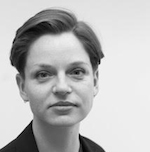Posted on October 28, 2014
Nancy Spector, Deputy Director and Jennifer and David Stockman Chief Curator of the Solomon R. Guggenheim Foundation has selected Eva Barois De Caevel as the recipient of ICI’s 2014 Independent Vision Curatorial Award.
The Award will be presented by Nancy Spector at ICI’s 2014 Annual Benefit & Auction taking place on November 17 at the Cunard Building, 25 Broadway in New York City. Eva Barois De Caevel is an independent curator based in Paris and the assistant curator at Raw Material Company, Dakar. She was selected from a shortlist of 15 emerging curators from around the world who were nominated by 15 internationally established curators for the strengths of exhibitions or projects they have recently produced.
“Eva Barois De Caevel’s unflinching curatorial practice tackles some of today’s most urgent issues, including sexuality and human rights, in a postcolonial world. Working collaboratively to encourage dialogue and participation among her audiences, with issues both local and global, she is courageously expanding the curatorial field.” – Nancy Spector, Deputy Director and Jennifer and David Stockman Chief Curator of the Solomon R. Guggenheim Foundation
Established in 2010 as an initiative of the Gerrit Lansing Education Fund, the Independent Vision Curatorial Award reflects ICI’s commitment to supporting international curators early in their careers who have shown exceptional creativity and prescience in their exhibition-making, research, and related writing. The award, including a $3,000 stipend towards a new project, is given every two years to an early or mid-career curator to support their independent practice through ICI, and give them a platform to pursue and publish their research online. The Independent Vision Curatorial Award is significant in that it is one of the very few awards in the world to recognize rising curatorial talent. Past winners include: Doryun Chong, Chief Curator at M+ Hong Kong, Nav Haq, Curator at Muhka, Antwerp and Jay Sanders, Curator at the Whitney Museum of American Art.
This year we reached out to 15 international curators and ICI collaborators, and asked them to nominate one emerging or mid-career curator for this award. From those nominations, Nancy Spector selected and will present this year’s award at the ICI Annual Benefit & Auction on November 17, 2014.
The 2014 Independent Vision Curatorial Award Nominating Committee includes: Zdenka Badovinac: Director, Moderna galerija, Ljubljana (Slovenia); Iwona Blazwick: Director, Whitechapel Gallery (UK); Zoe Butt; Executive Director and Curator, Sàn Art (Vietnam); Rosina Cazali: Independent Curator (Guatemala); Reem Fadda: Associate Curator, Middle Eastern Art, Abu Dhabi Project, Solomon R. Guggenheim Foundation (UAE); Gridthiya Gaweewong; Artistic Director, Jim Thompson Art Center (Thailand); Abdellah Karroum: Founding Artistic Director of L’appartement 22 (Qatar); Koyo Kouoh: Artistic Director, Raw Material Company (Senegal); Michy Marxuach: Co-director of Beta-Local (Puerto Rico); Riason Naidoo: Independent Curator (South Africa); Valerie Cassel Oliver: Senior Curator, Contemporary Arts Museum Houston (US); José Roca: Estrellita B. Brodsky Adjunct Curator of Latin American Art, Tate Modern, London, and Artistic Director of FLORA, Bogotá, Colombia; Claire Tancons: Curator (US); Philip Tinari: Director, Ullens Center for Contemporary Art (China).
This year’s nominees:

Eva Barois De Caevel: Independent curator and researcher
Eva Barois De Caevel is assistant curator at Raw Material Company, Dakar, and works as an independent curator. Eva graduated from the Université de Paris-Sorbonne Paris IV in Contemporary Art History in 2011 and in Curatorial Training in 2012, with her research focusing primarily on moving images. She has been working concurrently on academic research as well as on postcolonial questions and socially engaged practices in contemporary art, and on their interaction: how socially engaged practices in contemporary art can become think tanks on postcolonial issues.
She completed a curatorial residency at Raw Material Company – centre for art, knowledge and society, Dakar, which consisted of conceiving a yearlong program (January 2014 to January 2015) on sexual liberties in Africa through contemporary African art. She curated the first event of the program: Who Said It Was Simple. The exhibition included screenings, debates, a performance, and a seminar. She continued her collaboration with director Koyo Kouoh, working with her on several projects, such as Body Talk – Feminism, Sexuality and the Body in the Work of African Women Artists (to be held at WIELS, Brussels, in February 2015), and Streamlines, a project that makes the oceans the metaphorical focal point for an international group exhibition which will examine the cultural repercussion of the global stream of goods and trade between the South and the North (to be held at Deichtorhallen, Hamburg, in October 2015). Her next projects will focus on ways of displaying colonial legacies and contemporary imperialisms in vernacular and daily elements (sexuality, language, body image, garments, food, etc.) as well as through art forms and specific curatorial tools. She was part of the first TURN Meeting On Perspectives, Facts and Fictions (June 26-28, 2014, Berlin), a project of Kulturstifung Des Bundes, Germany. The TURN fund was established in 2012 with the purpose of promoting artistic exchange and cooperation between German and African artists and institutions.
She is co-founder of Cartel de Kunst, an international collective and solidarity network of emerging curators based in Paris.

Stefan Benchoam: Co-founder, Co-director, Proyectos Ultravioleta and NuMu
Stefan Benchoam (Guatemala City, 1983) is an artist and exhibition maker with a double B.A. in Fine Arts and Telecommunications from Indiana University (USA), and a strong interest in collaboration.
His work as an artist is multifaceted, with at least two distinctive lines of research: one in the public realm through actions and interventions, the other, which uses informality to question the myths of authenticity, the artist, and of art itself. His work as an exhibition maker aims to push the formats, strategies and venues of how exhibitions are created and experienced.
Through these shifting roles, Benchoam blurs the lines between the work of artist and curator.
As an artist, he has had solo-shows in La Casa Encendida (Madrid, 2013), The White Cubicle Toilet Gallery (London, 2011) and La Loseta (San Juan, 2011), and has participated in numerous international group exhibitions. As an exhibition maker, he has curated and co-curated numerous exhibitions in a variety of alternative project spaces and institutions.
He is the co-founder/co-director of Proyectos Ultravioleta- a multifaceted platform for experimentation in contemporary art, based in the heart of Guatemala City. He is also co-founder of the Buró de Intervenciones Públicas, a collective which develops low-cost, high-impact interventions in various cities worldwide and of the Nuevo Museo de Arte Contemporáneo (NuMu) which positions itself as Guatemala’s first contemporary art museum. Additionally, he is the Artistic Director of suelta, a bi-weekly online publication, which aims to bridge the gap between contemporary Latin American art and literature.

Bao Dong: Independent curator and art critic
Bao Dong (b. 1979) is an art critic and independent curator based in Beijing. He graduated from the Sichuan Fine Arts Academy in 2006 with an M.A. in Art History and has curated exhibitions for a wide range of art organizations since 2005. In contributing essays to the artistic dialogue and other forms of involvement, Bao has established himself as a leading curator and critic of work by the “new generation.” Since 2013, he has partially joined the work team of A4 Contemporary Arts Center in an advisory capacity. He is also a contributing editor for LEAP magazine and a guest writer for “cn.NYTtimes.com” and “artforum.com.cn”. His articles have been widely published in many publications as well as artist monographs, including Dushu, Yishu: Journal of Contemporary Chinese Art, Art World, Art China, Art Today, Arts Criticism, Fine Arts Literature, Jiangsu Pictorial, Journal of Contemporary Chinese Art, among others. In 2014, he was awarded Asian Cultural Council (ACC) fellowship grant.
In 2013, Dong conceived of a publication initiative with three other curators and critics, which is the annual publication of a journal focused on the topic research, discussion, archiving, and exhibition study of Chinese contemporary art, with support from the formation of an alliance among art professionals and non-profit art museums across China. The first issue of the journal, supported by Times Museum, Guangzhou, is expected to be launched between 2014-2015.

Anne Dressen: Curator, Musée d’Art Moderne de la Ville de Paris
Anne Dressen is a curator at ARC, the contemporary art department of the Musée d’Art moderne de la Ville de Paris. Her exhibitions question the unofficial or disregarded artistic practices as compared to the traditional fine arts, by focusing on several topics such as sound, music video, copying and reproduction, the craft or the decorative, in relation to cultural, gender and colonial issues. She holds a bachelor degree in Literature (Sorbonne University, Paris 4) and a Master in Art History (Ecole du Louvre, Paris and Sorbonne University, Paris 1) and in Museum Studies (New York University).
Among her exhibitions: Off the Record (2004), Playback (2007), Sturtevant. The Razzle Dazzle of Thinking (2010), Seconde main (2010), La Demeure joyeuse (2012) and Decorum. Carpets and tapestries by artists (2013), recently on view at the Power Station of art in Shanghai (2014). In 2015, she will co-curate Carol Rama’s retrospective (an overlooked Italian artist born in 1918) in collaboration with the MACBA in Barcelona (Spain), touring then to Helsinki (Finland), Dublin (Ireland) and Torino (Italy) in 2015/2016.
Her texts are published in institutional catalogues, artists’ publications, and in magazines (such as Artforum, Frog, Petunia, Flashart International, The Exhibitionist). She teaches art history at ECAL, Lausanne (Switzerland).
In 2009 she was a recipient for the Villa Medicis / Off the Wall residency grant and spent 3 months in China conducting research on the reality and fantasy of fake and copy practices and cultures in Ancient and contemporary China.

Inti Guerrero: Associate Artistic Director-Curator, TEOR/eTica
Inti Guerrero (1983, Bogotá, Colombia) is an art critic and curator based in Hong Kong, periodically working in San Jose, Costa Rica as Associate Artisitic Director of TEOR/éTica (founded in 1999). He studied History and Theory of Art and Architecture in Universidad de Los Andes, Colombia and Universidade de São Paulo, Brazil and attended De Appel’s Curatorial Programme, Amsterdam the Netherlands.
In TEOR/eTica he has curated (selection): Entre Concreto, 2014; New Fantasies (co- curated with Lina castañeda), 2013; The Where I am is Vanishing- Mariana Castillo Deball, 2012; Men Amongst the Ruins, 2012; Metallic Building, 2012; and co-curated the international congress Temas Centrales 2.
Recent curatorial projects include: A Chronicle of Interventions (co-curated with Shoair Mavlian), Tate Modern, London; Josephine Baker and Le Corbusier in Rio – A Transatlantic Affair, (co-curated with Carlos Maria Romero), Museum of Art of Rio, Rio de Janeiro, Brazil; A Journal of the Plague Year. Fear, ghosts, rebels. SARS, Leslie and the Hong Kong story (co-curated with Cosmin Costinaş), Para Site, Hong Kong, 2013 touring throughout 2014-2015 at TheCube, Project Space, Taipei; ARKO art centre, Seoul and Kadist, San Francisco; Institute of Tropical Fascism guest project in Bergen Assembly, Bergen, 2013; Kadist. Pathways into a collection, Minsheng Art Museum, Shanghai, 2012; The City of the Naked Man, Museu de Arte Moderna de São Paulo, São Paulo, 2010; Flying Down to Earth, Museo de Arte Contemporáneo-MARCO, Vigo and FRAC Lorraine, Metz, 2010; Duet for Cannibals, Royal Tropical Institute, Amsterdam, 2010; and Light Years-Cristina Lucas, Centro de Arte 2 de Mayo.
His writings have appeared in Afterall, ArtNexus, Metropolis M, Nero, Manifesta Journal, and Ramona, among other publications and exhibition catalogues. Guerrero has been a visiting professor a the Rietveld Academy, Amsterdam and a guest lecturer and symposium speaker at Chelsea College for the Arts, London; California College for the Arts, San Francisco; and The Getty, Los Angeles.

Agung Hujatnikajennong: Independent curator and lecturer
Currently a freelance curator and lecturer, Agung Hujatnika a.k.a Agung Hujatnikajennong was the in-house curator (2001-2012) at Selasar Sunaryo Art Space, Bandung, Indonesia. He obtained his doctoral degree (2012) from the Bandung Institute of Technology, Indonesia. His research focuses on the history of exhibition making, curatorial practices and the formation of the Indonesian contemporary art world. Tracing the development since the pre-independence era up to the present, it highlights the connection between of the wave of post-Cold War internationalization and the proliferation of regional exhibitions, the curatorial turn in Indonesia in the 1990s, and its shift following the Asian art boom in the 2000s.
Since 1999, Hujatnika has been contributing as writer and editor for various art publications in Indonesia and abroad. He carried out curatorial residency programs in Australia (2002; 2010) and Japan (2004; 2011), and has been working closely with artist initiative, ruangrupa, in Jakarta, especially as the curator for the OK Video Festival (2003; 2005; 2011). Focusing primarily on Indonesian and Southeast Asian contemporary artists, he has curated solo and group exhibitions with different institutions, including Yasumasa Morimura (2001); Ecstaticus Mundi (2002); AVICON – Asia Video Art Conference (2004, co-curated with Videoart Center Tokyo); Bandung New Emergence (2006; 2008; 2011); I/CON, solo exhibition of Agus Suwage (2007); Nobody’s Land – Heri Dono (2008); The Fitting Room – Mella Jaarsma (2009); Loss of the Real (2010); Java’s Machine: Family Chronicles – Jompet Kuswidananto (2011); Human Resource Development – Ade Darmawan (2012); copy select all – Poklong Anading (2013); Threshold – Takashi Kuribayashi (2013), and; Things Happen when We Remember – FX Harsono (2014).
Hujatnika has a particular interest on the issue of art world’s mobility and international collaboration, which he has developed in his curatorial works for Fluid Zones – 13th Jakarta Biennale (2009); Exquisite Corpses and other Memories at the Bandung Pavilion of Shanghai Biennale (2012, co-curated with Charles Esche and ArtHub Asia), and; Not a Dead End – Jogja Biennale XII, Equator #2 (2013, co-curated with Sarah Rifky). He has also involved in the establishment of Master Program of Art Management and Curatorship (2012) at his alma mater, and continued to teach there since 2008.

Naima Keith: Assistant Curator, The Studio Museum in Harlem
Naima J. Keith is an Assistant Curator at The Studio Museum in Harlem where she focuses on themes of identity and conceptual practices in contemporary art, particularly as it relates to artists of African descent. Since joining the Studio Museum in 2011, Keith has organized numerous large-scale exhibitions and catalogues. Her most recent exhibition Charles Gaines: Gridwork 1974 – 1989 (2014) toured nationally and was received with widespread critical acclaim, Glenn Kaino: 19.83 (2014) marked the New York debut of this Los Angeles based artist and The Shadows Took Shape (co-curated with Zoe Whitley, 2013), which featured twenty-nine international artists and over 60 works of art that represent contemporary art and Afrofuturist aesthetics was considered groundbreaking. At her tenure at the Studio Museum, Keith has also organized Robert Pruitt: Women (2013), Fore (co-curated with Lauren Haynes and Thomas J. Lax, 2012), Caribbean: Crossroads of the World (Institutional Curator, 2012), Collected. Ritual (2011) and John Outterbridge: The Rag Factory II (2011). She comes to the Studio Museum from a position as Curatorial Fellow at the Hammer Museum, where she worked closely with guest curator Kellie Jones on the critically acclaimed exhibition Now Dig This! Art and Black Los Angeles 1960-1980 (2011). Her essays have been featured in publications for The Studio Museum in Harlem, Hammer Museum, LAXART, MoMA PS1, NKA: Journal of Contemporary African Art and the University Art Museum, University of California, Santa Barbara. Keith has also taught at Loyola Marymount University, University of California, Los Angeles, University of California, Santa Barbara and University of Missouri.
Keith received a master’s degree in contemporary art from University of California, Los Angeles, completing her thesis on Los Angeles based artist Mark Bradford and a bachelor’s degree in art history from Spelman College.

Thomas Lax: Associate Curator of Media and Performance Art, Museum of Modern Art, New York
Lax is currently Associate Curator of Media and Performance Art at the Museum of Modern Art. For the previous seven years, he worked at The Studio Museum in Harlem, most recently as Assistant Curator, where he organized over a dozen exhibitions. His interests include American and international contemporary art, with a particular focus on dance, performance, and video, as well as socially-engaged practices in all media.
Lax is motivated by investigations of the ways social contexts—be they racial, geographic or interpersonal—are subtly embedded in how we read and interpret formal decisions artists make. Conceiving of cultural information and materials this way allows for both a sense of reverence to the place and time in which is work is made, as well as a sense of play as he works with a specific audience and place to create new contexts as a curator.
Lax has written for artist monographs locally and internationally for venues including Artists Space, New York; Haus der Kunst, Munich; Jeu de Paume, Paris; Kunstnernes Hus, Oslo; MoMA PS1, New York; and the Whitney Museum of American Art, New York. I am a contributor to Artforum, Art in America, Art Journal and Mousse.
He has lectured at the Hirshhorn Museum and Sculpture Garden, Washington D.C. (2014); the University of California, Los Angeles (2013); Columbia University, New York (2013); the Jeu de Paume, Paris, (2013); the Brooklyn Museum’s Elizabeth A. Sackler Center for Feminist Art (2013); and Danspace Project, New York (2012 and 2014).
Lax is a faculty member at the Institute for Curatorial Practice in Performance at Wesleyan University’s Center for the Arts; on the Advisory Committee Vera List Center for Arts and Politics; on the Arts Advisory Committee of the Lower Manhattan Cultural Council; a member of the Catalyst Circle at The Laundromat Project; and on the Advisory Board of Recess.
He has served on juries at New York Live Arts (2011 and 2012), Art Matters (2012 and 2014) and the Pew Center for Art and Heritage.
Lax received a BA from Brown University in Africana Studies and Art/Semiotics, and an MA in Modern Art from Columbia University.

Tevž Logar: Independent Curator
Tevž Logar currently works as a freelance curator. Between 2009 and 2014, he was the artistic director of Škuc Gallery in Ljubljana, Slovenia. His curatorial and editorial work focuses on long-term research based on and balanced between presentations of historical and contemporary artistic positions. He is also interested in re-questioning the exhibition as a “medium of communication”, in relation to its formal, theoretical, social and geo-political conditions. In 2013, Logar curated the exhibition in the Slovenian Pavilion at the 55th Venice Biennial. Since 2009, he has been lecturing on the History of Art of 20th century at the Academy of Visual Arts in Ljubljana (AVA). Recently, he has also worked as a screenwriter for a full-length feature documentary, Project Cancer, Ulay’s journal from November to November. In 2014, he co-founded Ulay Foundation in Amsterdam and became one of the trustees of the artist’s oeuvre. Logar currently lives and works in Ljubljana.

Emile Maurice: Resident curator, Centre for Humanities Research, University of the Western Cape
Emile Maurice was born in Cape Town, South Africa. As a curator, author, and teacher he has worked in the arts and culture and heritage sectors for many years. He received is MA in Art History from Syracuse University in 1981. His primary interests are in rewriting South African cultural history with a view to greater equity and representation in the context of colonial and apartheid marginalization. His major exhibitions have been featured in the Botswana Arts Festival, Garbone, Botswana. He is currently a curator at the University of the Western Cape.
Emile is responsible for curating the exhibition, Uncontained: opening the Community Arts Project archive (2012), public of a collection of artworks that has largely lain dormant in the storerooms of Community Arts Program (CAP) and Arts and Media Access Centre (AMAC), and the re-activation of the archive from neglect by mainstream cultural history.

Diana Nawi: Associate Curator, Pérez Art Museum Miami
Diana Nawi is an associate curator at Pérez Art Museum Miami (PAMM). Nawi’s work as a curator emerges from a commitment to institution building as both a creative and civic undertaking. Prior to joining PAMM, where she is part of a team of curators responsible the inaugural program of the newly reopened museum, Nawi worked as an assistant curator on the Abu Dhabi Project of the Solomon R. Guggenheim Foundation. PAMM and the Guggenheim Foundation both combine a focus on international and transnational artists and cultural movements with a deep interest in local context, and her work at both institutions has re-affirmed Nawi’s belief in the crucial role museums play in writing and rethinking histories, and building and contributing to communities through the establishment of public dialogue.
Responding to context, both in geographic and intellectual terms, Nawi is committed to a curatorial practice that serves artists and communities, nurtures a conceptualization of what it means to be “off center,” and creates a space for open discourse around art and ideas. She is interested in artistic practices that reflect an engagement with issues of place, identity, and political imagination and has recently worked with artists such as Yael Bartana, Nicole Cherubini, Adler Guerrier, Iman Issa, LOS JAICHACKERS (Julio Cesar Morales and Eamon Ore-Giron), Bouchra Khalili, and Nari Ward to develop new projects and exhibitions. Nawi understands the role of the museum curator as bringing to light vital, if often overlooked, histories, narratives, and possibilities.

Mary Pansanga: Independent Curator
Mary Pansanga is an independent Bangkok-based curator with a background in film and moving image. She has worked curating exhibitions as well as film festivals. She is currently launching ‘cloud’, an ongoing project that generates the idea of flexibility of both the spatial structures and the program space, transmitting ideas in contemporary art and moving image work which underlies their perspectives and practices, serving as a meeting platform for communication, education and open-ended dialogue.

Marina Reyes Franco: Independent curator, Co-founder and Director, La Ene
Marina Reyes Franco is an art historian, independent curator and co-founder and director of La Ene – Nuevo Museo Energía de Arte Contemporáneo, based in Buenos Aires, Argentina. She received a BA in Art History from the University of Puerto Rico and a MA in Argentine and Latin American Art History at IDAES-UNSAM, Argentina. She started her career working on the Jack & Irene Delano archive at the Fundación Luis Muñoz Marín, where she helped organize the collection of photographs, drawings and other personal material belonging to the artists. Before turning to curating, she worked as an arts writer for various publications in Puerto Rico. Since 2010, she has been working at La Ene, the museum she co-founded with Gala Berger as a critical intervention in the Buenos Aires art scene, and contributes regularly curating exhibitions. In 2010 she was a LIPAC [Contemporary Art Practices Research Laboratory] fellow at the University of Buenos Aires, a resident at Beta Local in San Juan, Puerto Rico (2012) and Phosphorus in São Paulo, Brazil (2013), as well as a Jumex Foundation Scholarship awardee for the ICI Curatorial Intensive in Mexico City (2014). In 2014, she co-curated Barrio Joven, the emerging gallery and artist-run initiatives section at arteBA. She has continued to write in ArtPulse, Mama Lince, Adelante, Revista Sauna, The Creators Project, Beta Local’s El Diario, Ramona, Revista CIA, the Guggenheim UBS MAP Perspectives blog and various exhibition catalogues. Born Wild, a book on the work of Gala Berger was published last year by the Sagayo & Pardon Collection. She has been invited to speak and run workshops on writing and curating at the University of Puerto Rico and Centro León in the Dominican Republic. Her research interests include the work of Esteban Valdés, the alternative circulation strategies of graphic art, post-colonial theory, feminism, museum studies and new museology, autonomous art projects, and artistic and literary manifestations in the frontier of political action. Upcoming projects include an exhibition about contemporary art practice in Puerto Rico and curating a residency project by Chemi Rosado Seijo, both at the Museo de Arte Contemporáneo in San Juan.

Gaia Tedone: Independent Curator (London, UK/Milan, Italy)
Gaia Tedone (b. in Bari, Italy 1982) is an independent curator based in London.
She holds a BA in Economics for the Arts, Culture and Communication from Luigi Bocconi University, Milan (2005), an MFA in Curating from Goldsmiths College, London (2008) and was a Curatorial Fellow of the Whitney Independent Study Program, New York (2010). In 2013-2014, she was granted a Curatorial Fellowship funded by the Arts Council of England and organised by Whitechapel Gallery and Contemporary Art Society in collaboration with the Brighton & Hove Museums. The results of this period of research across the South of England culminated in the display entitled Twixt Two Worlds which is currently on show at Whitechapel Gallery, London and will tour to Towner Art Gallery, Eastbourne in the fall. Concurrently, Tedone has undertaken the position of Project Curator of the 8th edition of the Young Curators Residency Programme at Fondazione Sandretto Re Rebaudengo in Turin, Italy, supervising a small team of international curators in the delivery of an exhibition and publication inspired by the Italian art context.
From 2012 to 2013, Tedone worked within Tate Modern’s curatorial department, assisting on acquisitions and displays for the Collection of Photography and International Art, and was involved in the planning and organization of photography displays, such as Carl Andre and Lewis Baltz, Modernist Photography, Mark Ruwedel and Ursula Schulz-Dornburg. Alongside assisting in the management of the Photography and Middle East and North Africa Acquisitions Committees, she undertook substantial research for the collection of time-based media art. Previously, she was an Assistant Curator in charge of Exhibitions, Projects and Collection at The David Roberts Art Foundation, London (2008-10), where she actively contributed to the conception and delivery of audience-focused exhibitions and events in collaboration with international artists and curators
Tedone is engaged with artistic and curatorial practices that respond to the social and political context we live in. Her involvement with the medium of photography began with an undergraduate thesis entitled Photography as a source for history: the experience of the Farm Security Administration (2005), in which she analyzed the relevance of the FSA’s documentation within the social and political history of the U.S. and its contribution to the history of photography as an artistic form. Since then, her research in the field of photography has significantly expanded and today embraces enquiries into the fields of visual culture and media studies, with a particular focus on issues related to the critique of representation and the shifting conditions of images within contemporary culture at large. She is interested in investigating the role of documentary practices in relation to the geographical and psychological displacement emerging from within the cultural cartography of globalization. She considers dialogue and confrontation the very essence of curatorial practice and she is invested in exploring strategies to prompt dialogue between historical and contemporary works and to open up art to a variety of disciplines, audiences and contexts.

Natalia Valencia: Independent curator
Natalia Valencia Arango (Bogotá, 1984) is an independent curator currently based between Paris and Mexico City. Her curatorial projects and writings depart from an interest towards language, non western conceptions of time and systems of belief, while also enquiring into the phenomenology of the exhibition space.
Her recent curatorial projects include A water staircase at Palais de Tokyo in Paris, France (2013), Azul equivocation, Julia Rometti & Victor Costales, at L´appartement 22 in Rabat, Morrocco (2013), Crying for The march of humanity, Christian Jankowski at Sala de Arte Público Siqueiros in México City, Mexico (2012), A series of possible memories at Museo Quinta de Bolívar in Bogotá, Colombia (2011), Ultramarica at Proyectos Ultravioleta in Guatemala (2010). She is currently preparing a solo exhibition by Cyprien Gaillard at Sala de Arte Público Siqueiros in Mexico City in 2015.
In 2013 she worked as fellow researcher of Latin American modern art for Centre Pompidou in Paris, France, where she contributed to the preparation of the Modernités plurielles, 1905-1970 exhibition of the modern collection of the museum (2013-2015), under the direction of Catherine Grenier.
She has written for Kaleidoscope, The Paris Triennale, SUR and for various exhibition catalogues. In 2011 she conducted the seminar Unlearning the future at Universidad de los Andes in Bogotá, with Milena Bonilla and Luisa Ungar. She received her BFA from Universidad de los Andes in Bogotá and her MFA from Concordia University in Montreal.
Join us and meet the winner at the 2014 Annual Benefit & Auction on Monday, November 17, 2014 at the Cunard Building at 25 Broadway. To stay updated on this event or for ticket inquiries contact Jenn Hyland at jenn@curatorsintl.org.
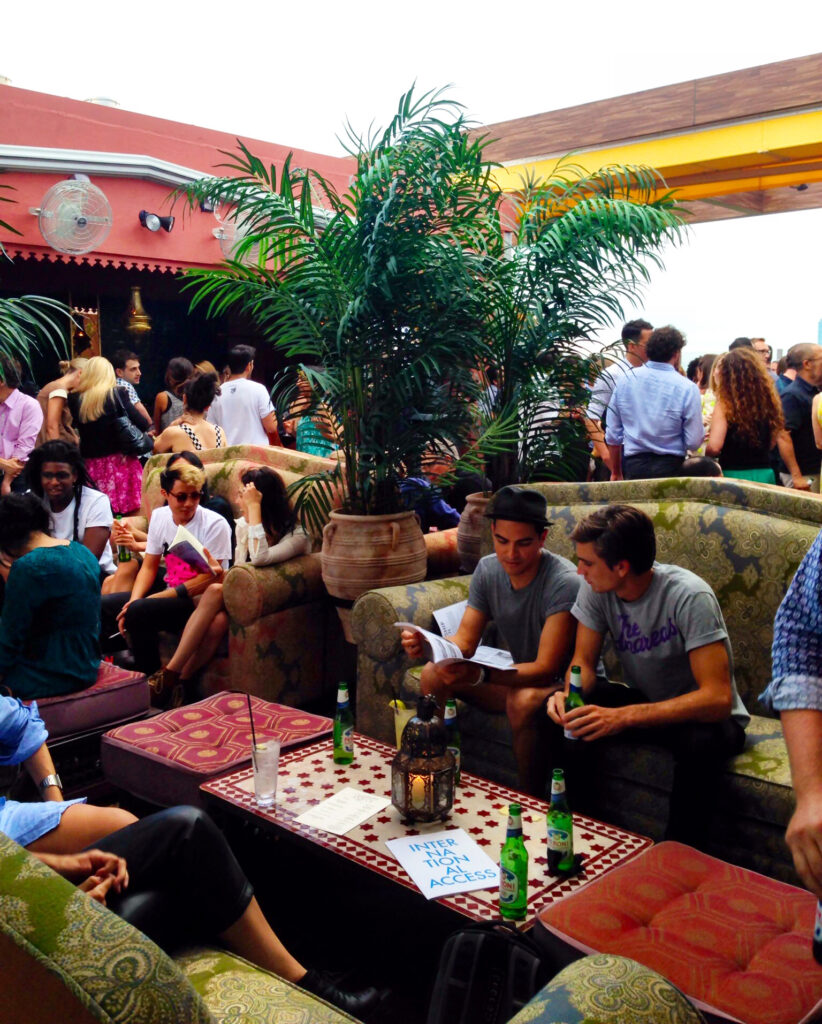

































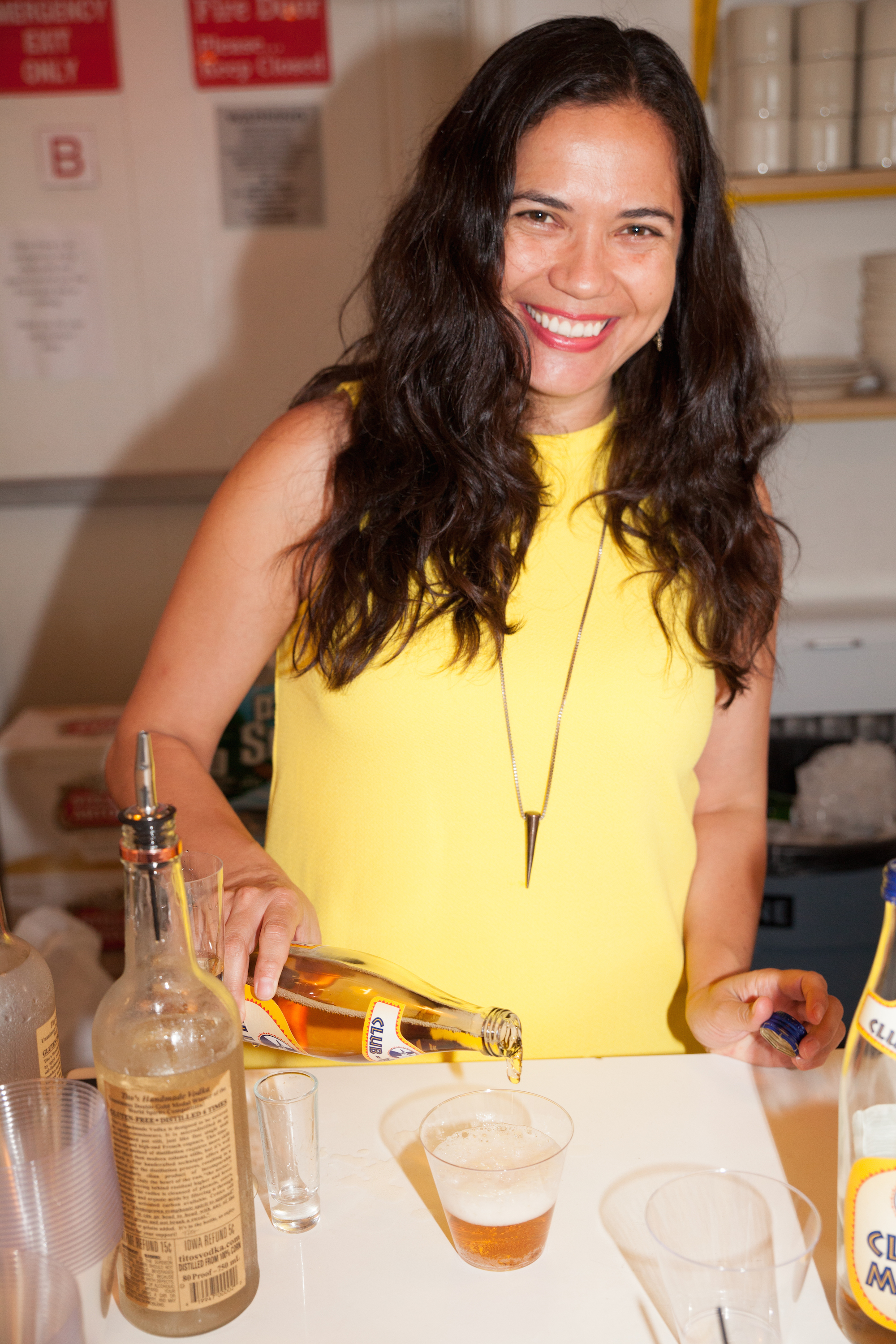





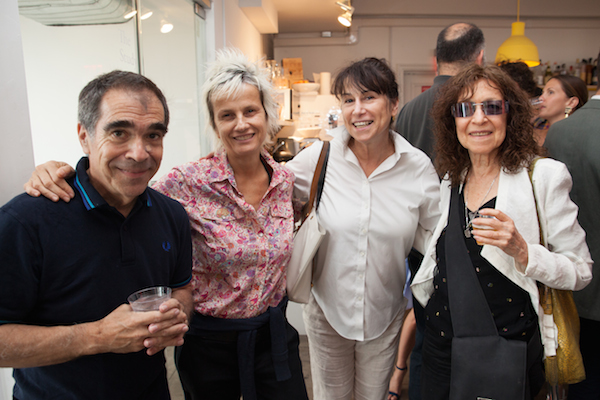








 Photo: Sarah Jacobs for ICI. Thank you to our sponsor:
Photo: Sarah Jacobs for ICI. Thank you to our sponsor: 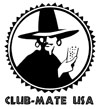




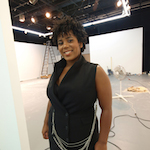 Rashida Bumbray: Independent curator and choreographer; Senior Program Manager, the Arts Exchange, Open Society Foundations
Rashida Bumbray: Independent curator and choreographer; Senior Program Manager, the Arts Exchange, Open Society Foundations Diana Campbell Betancourt: Artistic Director of Samdani Art Foundation, Dhaka and Bellas Artes Project, Bagac; Chief Curator Dhaka Art Summit, Dhaka
Diana Campbell Betancourt: Artistic Director of Samdani Art Foundation, Dhaka and Bellas Artes Project, Bagac; Chief Curator Dhaka Art Summit, Dhaka

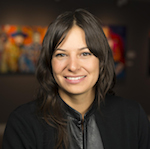
 Miguel A. Lopez: Chief Curator, TEOR/éTica (San José, Costa Rica); Co-founder, Bisagra (Lima, Perú)
Miguel A. Lopez: Chief Curator, TEOR/éTica (San José, Costa Rica); Co-founder, Bisagra (Lima, Perú)


